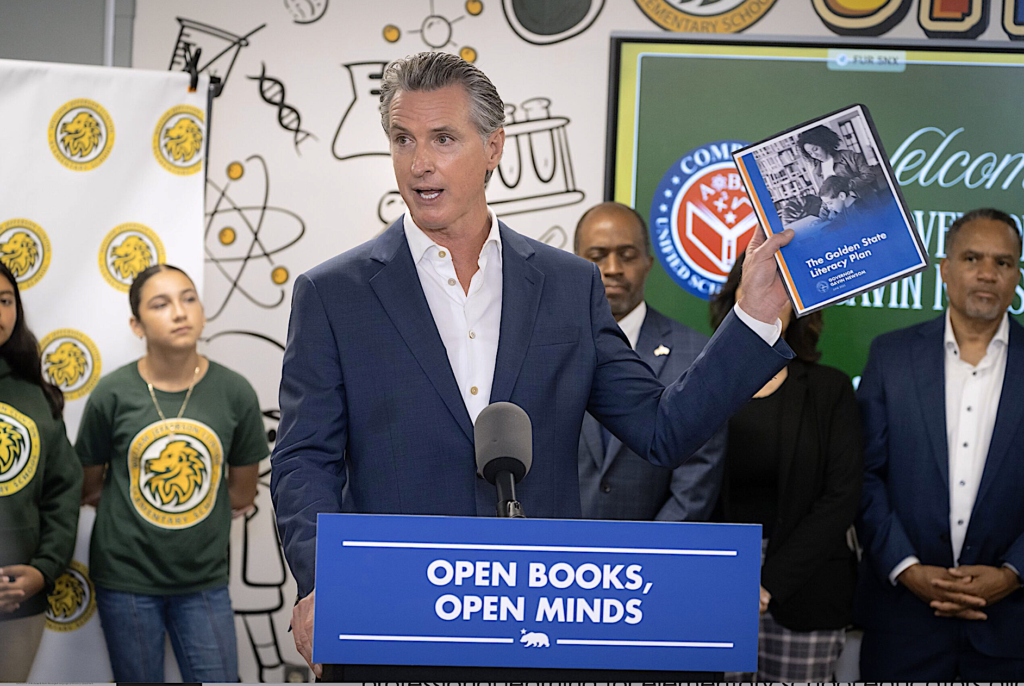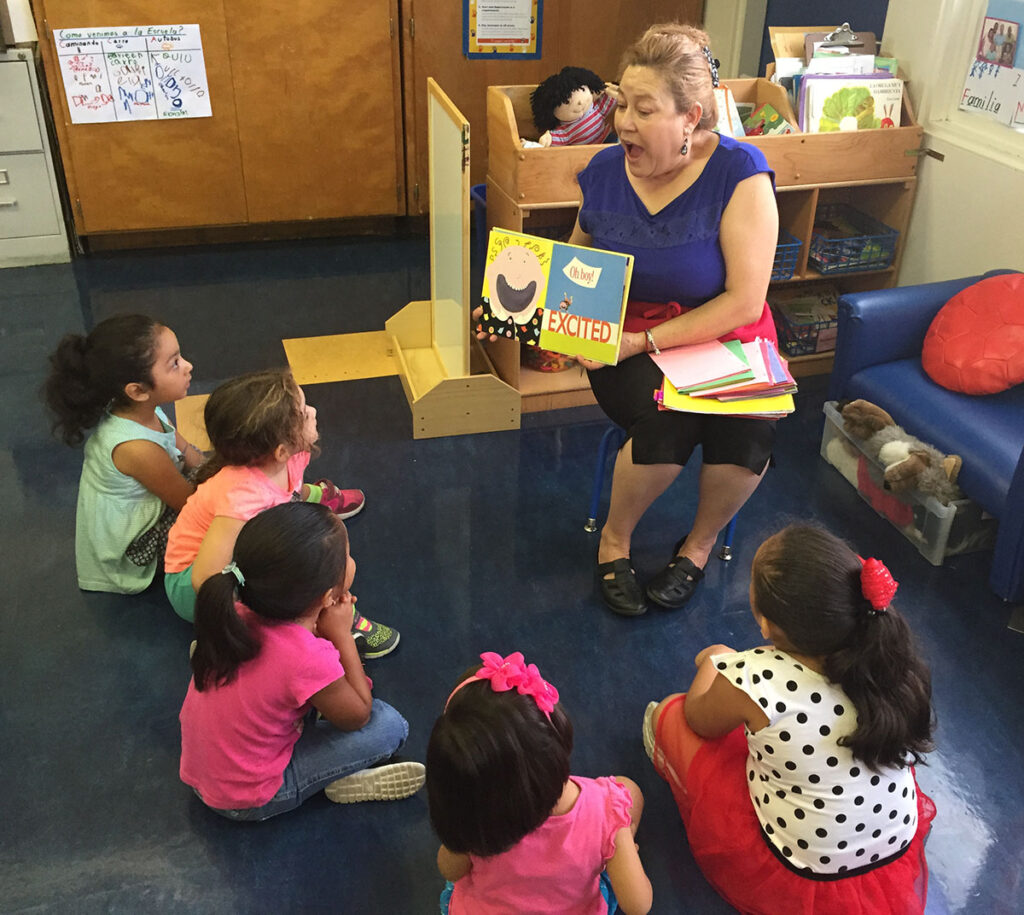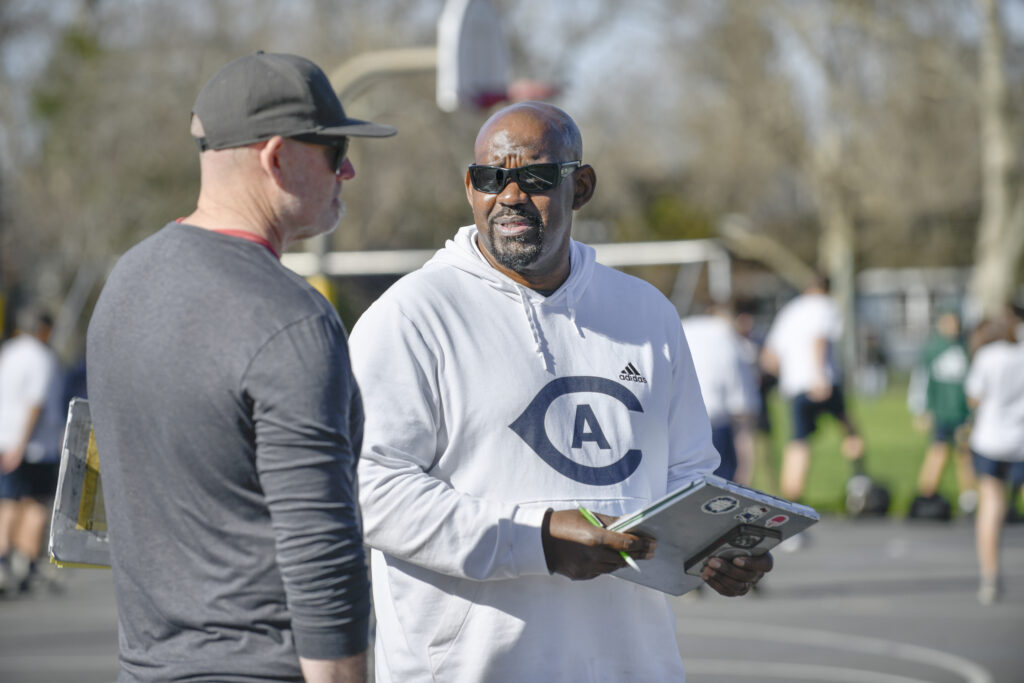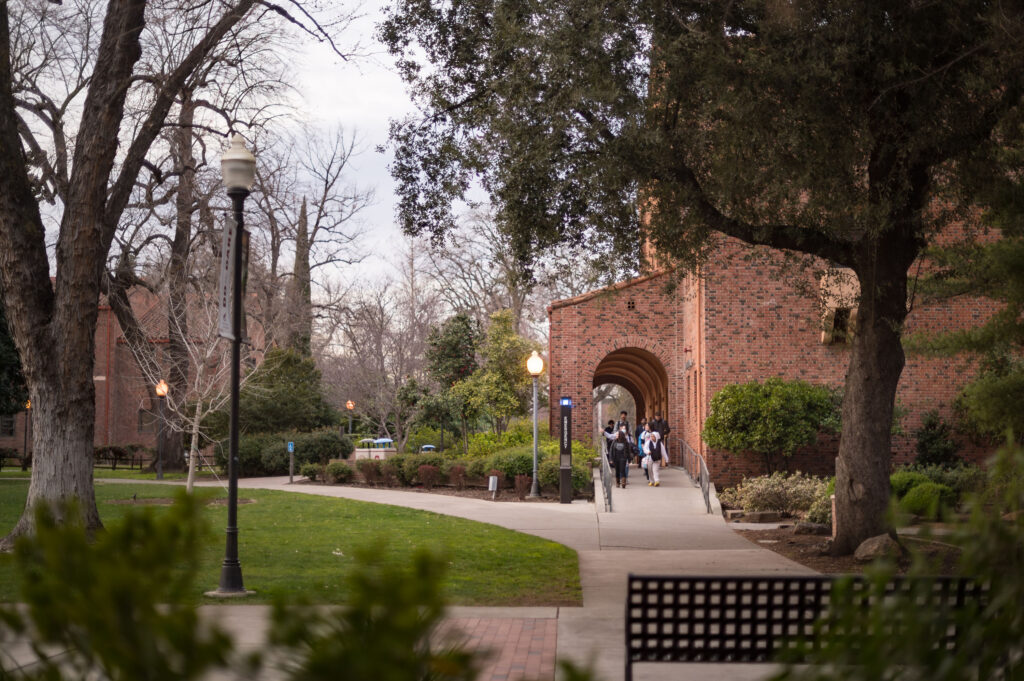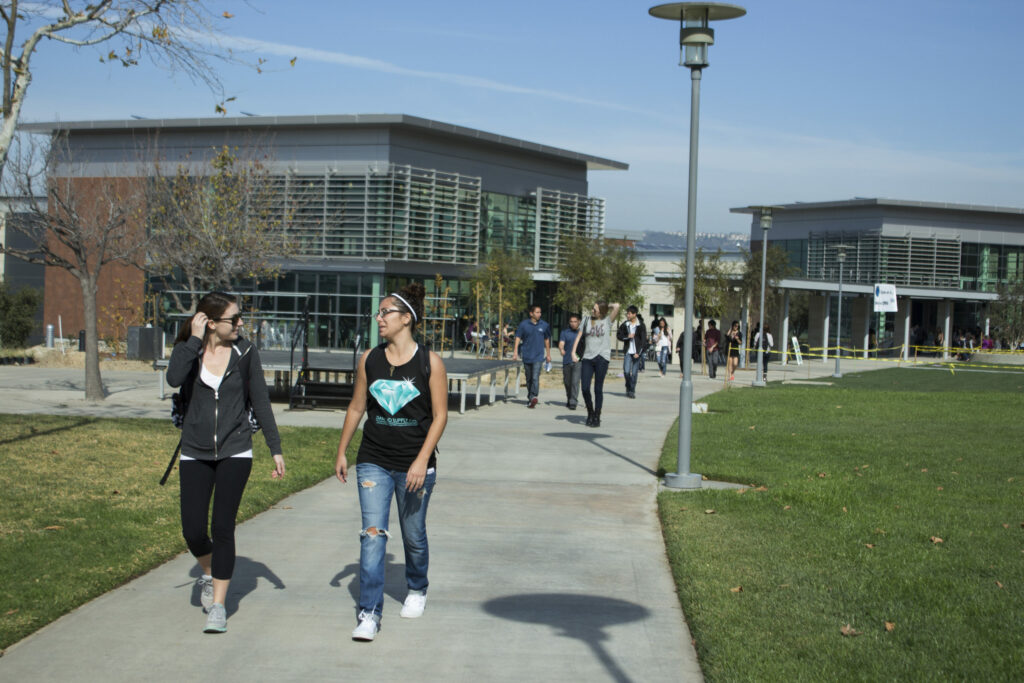
Students walking on CSU San Marcos campus.
Anne Hall/CSU San Marcos
New general education requirements created for transfer students will now apply to all students, including first-time freshmen in the California State University.
Cal State trustees voted Wednesday to create a unified, simplified general education pathway for all students, despite opposition from faculty and students that the decision would eliminate classes that contribute to lifelong learning.
The decision effectively replaces the “CSU GE Breadth” and reduces the number of general education required credits from 39 to 34, by eliminating additional humanities and arts courses and classes identified as lifelong learning and self-development. However, it also adds a laboratory class to the requirements. Students would still be able to take many of these courses as electives.
The simplified pathway, known as Cal-GETC or the California General Education Transfer Curriculum, was first proposed in May 2022 as part of the Student Transfer Achievement Reform Act of 2021 as a way to improve the transfer experience for community college students entering the University of California and Cal State systems. The curriculum was developed by the academic senates of the CSU, the UC and the community colleges and goes into effect in the fall of 2025.
Although the new transfer pathway was created with community college students in mind, Cal State administrators and trustees chose to apply it to first-time freshmen, too.

About 60% of Cal State’s first-year applicants have some type of transfer credit, many of them earned through dual enrollment courses taken in high school, said April Grommo, CSU’s vice chancellor for enrollment management, adding that some continuing CSU students also complete general education courses through their local community colleges. Without creating one pathway, Grommo said about 25% of undergraduates would have to complete more general education requirements.
“Aligning general education for all CSU students provides an equitable set of degree requirements for all undergraduate students,” she said.
Trustees said proceeding with two different systems could lead to equity concerns.
“I am concerned that if we have one path for community college transfers and one path for those students who begin with us, that there might be a feeling of inequity,” trustee Jack Clarke Jr., said.
Although most Cal State faculty support the new simplified path for transfer students, many said they opposed applying it to students who enter the system as freshmen.
Beth Steffel, chair of CSU’s academic senate, said despite claims that students can still take these courses, there is a chance that courses will be eliminated if not designated as part of general education.
“If a course is not required, it will not be offered,” Steffel said. “Resource constraints ensure this reality.”
Eliminating the courses from general education requirements could also have unintended consequences by reducing the potential for students to learn other languages through arts and humanities and create costs by adding an additional science laboratory, Steffel said.
Steven Filling, an accounting professor at Stanislaus State, said losing the courses provided in CSU GE Breadth rquirements would be detrimental to students who enter the system as freshmen because they would miss out on the extra skills gained from social learning, communication and critical thinking.
For example, kinesiology classes, which is the study of movement, fall under the lifelong learning and self-development courses. Students interested in business fields like accounting, for example, could take golfing courses to prepare them for meeting with clients.
“If you’ve never played golf and have no clue about it, well, you may have a little bit of trouble,” Filling said.
These classes are called “lifelong learning” because they help students discover how to cope and deal with the world around them, he said.
There’s another reason some CSU faculty oppose Cal-GETC: Much of the curriculum was chosen with the UC system in mind.
“The UC has a pretty strong position of, ‘Well, if we don’t agree to it, we’re not going to do it,’” Filling said. “If you look at Cal-GETC, you’ll notice a strange similarity between that and the UC’s present (general education) programming.”
Filling said one problem with that is the UC and Cal State systems have different missions and, although there is overlap, educate different types of students. For example, the UCs are tasked with admitting the top 9% of high school graduates.
“To think that somebody in the top 5% of their high school class is going to be at exactly the same level as somebody who is at the 30th percentile is unrealistic,” he said.
“It’s clear our students need different things than what UC students do,” he said. “It may be the case that the community colleges, with the resources they have, can provide the additional support those students need to get them up to the level where UC students are. It’s far from clear to me that that works for students coming into the CSU.”
The new simplified pathway represents both systems, said Laura Massa, Cal State’s interim vice chancellor for academic and faculty programs. For example, Cal-GETC includes ethnic studies and oral communication requirements that were required for CSU but not UC.
Student trustee Diana Aguilar-Cruz said some of the opposition from students arises from their rising distrust of the board and administration’s decisions. Students have been calling for some analysis of the current general education path before making any change.
“Especially with all the prior decisions that we’ve been making throughout the year,” Aguilar-Cruz said, referring to the tuition increase. “They really need to see this data. … That has really fractured the trust that students have.”
However, trustees said they did not want to proceed with two different systems for meeting general education requirements.
Despite opposition from faculty and students to the change, Cal State officials said they worked collaboratively with both groups on understanding the pros and cons and took both groups into consideration.
“Shared governance doesn’t always mean agreement,” CSU Chancellor Mildred Garcia said. “The success, sustainability and continued growth of our institution depends on our ability to recruit, serve and guide our students through our universities to remove barriers that sometimes we put in their way and provide clear and direct pathways to a degree and a fulfilling profession for us. And for me, I believe a single GE pattern for all CSU students achieves that goal, and it advances our mission of student success for all.”




